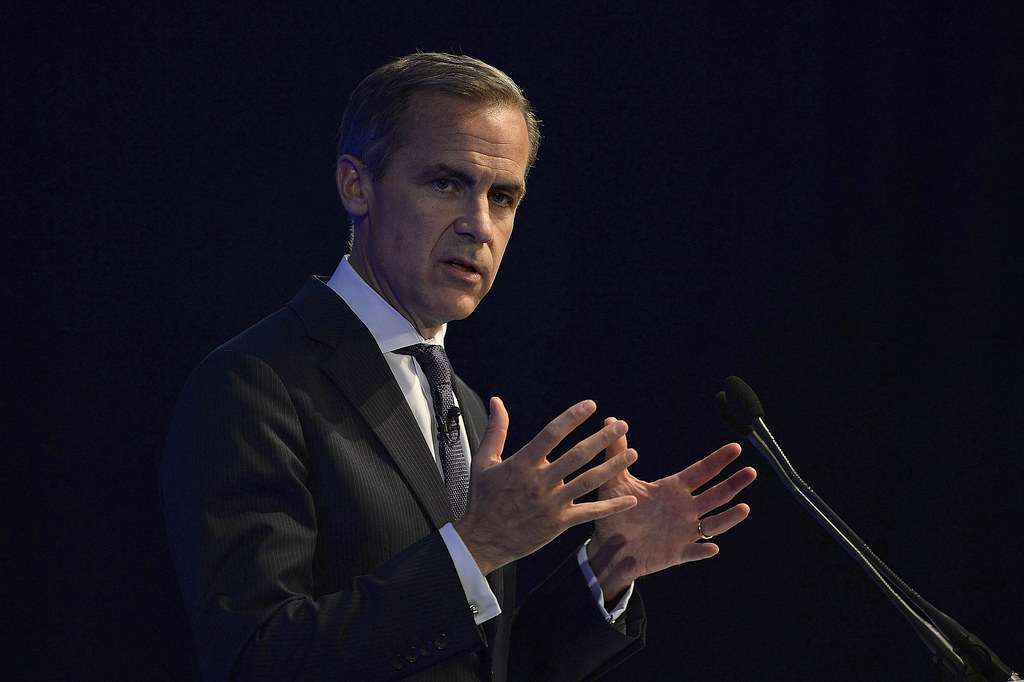Canada Federal Budget 2025: What Small Business Owners Need to Know

There’s been some big news recently: the 2025 federal budget has just been released. If you’re a small business owner, you’ll want to pay attention – this one has a lot of ripple effects headed your way.
Released by the Department of Finance Canada, the federal budget serves as the blueprint for the government’s broader economic roadmap. This year marks a major change: the budget is now being released in the fall rather than the spring. Going forward, federal budgets will follow this fall release schedule.
Finance Minister Francois-Philippe Champagne, who delivered the Budget 2025-26 on Nov. 4, says that this change will increase transparency in how taxpayer dollars are used. With this new shift, we haven’t seen a federal budget since April 2024.
And since government spending directly influences taxes, hiring, funding programs, and market conditions, what’s in this budget can shape the future of your business.
It’s been a long time coming, but it’s finally here. Let’s take a look at the rundown.
Before you dive in: Watch our video breakdown of the grant insights from Budget 2025 for Canadian SMEs.
What Experts Predicted for Budget 2025, and how they compared.
So what did everyone think would happen before the budget actually arrived? Here’s a quick look at the biggest predictions for Budget 2025, and what actually got tabled.
Increase in deficits
Prior to the budget release, Mark Carney said that the budget would focus on “austerity” and “investment.”
The government’s election platform planned to run deficits totalling $224.8 billion over the next four years. Just in July, Champagne had asked all ministries to cut 7.5% from program spending in the 2026-27 fiscal year, with further cuts in the years following.
It’s safe to say that across the board, people predicted that there would be an increase in the deficit.
Parliamentary budget officer Jason Jacques estimated an increase in deficit to $68.5 billion, up from $51.7 billion dollars last year.
Jacques was close – The projected deficit instead was at $78.3 Billion.
Increase in the GST rate
With federal deficits climbing, some experts predicted a GST increase would be back on the table. GST was first introduced in 1991 at a 7% rate, but was decreased to 5% in 2008.
A consultation led by the Business Council of Canada found consensus among business leaders and economists that raising the GST is one of the most effective ways to boost government revenue. In fact, the C.D. Howe Institute estimates that a 2% hike could bring in an extra $30 billion annually.
However, Budget 2025 made no changes to the overall GST rate. Aside from the targeted relief for first‑time homebuyers, no other broad GST adjustments were announced.
Boosting Innovation Through SR&ED Reform
Another common prediction was a revitalization of the Canadian Scientific Research and Experimental Development (SR&ED) program, which incentivises businesses to conduct R&D in Canada.In a proposal released in August 2025, there were plans to increase the eligible expenditures for the program and also expand eligibility.
Budget 2025 increased the expenditure limits by $2 million, from $4 million to $6 million.
What happened in the lead-up?
The lead up to the 2025 Budget had several announcements to give hints on what was to come. Just in September, Carney announced several counter-measures to strengthen Canadian industries as well as respond to US and China tariffs. This was covered in our previous blog: Read more about the tariff counter-measures
Some of these pre-budget announcements includes:
- $5 billion for a new Strategic Response Fund. (An increase from the projected $2 billion promised in Carney’s Canada Strong plan)
- $3.6 billion over three years for temporary EI measures due to tariff uncertainty.
- $370 million for a new biofuel production incentive.
- $660.5 million over five years for gender equality and safety
- $97 million over five years to create a Foreign Credential Recognition Action Fund.
- $450 million over three years for a workers’ reskilling package.
What Did Budget 2025 Deliver?
Now that the numbers are out, let’s take a look at some of the measures that have been proposed, and what they mean for Canadian businesses.
Measures for SMEs
Budget 2025 includes several measures designed to support small and medium-sized enterprises (SMEs), helping them grow, innovate, and compete globally.
Large Enterprise Tariff Loan
A $10 billion financing facility to increase liquidity for small-medium sized businesses in Canada affected by tariffs. The first loan has already been given to Algoma steel accessing accessing $400 million in liquidity.
SME Export Readiness
$46.5 million over four years to support training for SMEs with limited exporting experience to build capacity to make informed, strategic decisions as they diversify trade. This will help Canadian firms access and be successful in new international markets and increase economic resilience.
CanExport
$68.5 million over 4 years and 19.9 million ongoing to enhance the program. It encourages SMEs to diversify and expand their exports to new markets.
But those aren’t the only measures that could benefit SMEs. The budget also proposes measures to strengthen Canadian businesses, and help SMEs in federal procurement.
Buy Canadian Policy
Budget 2025 wants Canada to become “our own best customer.” The government is on a mission to make Canada strong by empowering and protecting Canadian businesses.
The money funnelled to support the Buy Canadian Policy include:
- $98.2 million over 5 years
- $9.8 million ongoing to Public Services and Procurement Canada
- $7.7 million over 3 years to support its implementation
- $79.9 million over 5 years to support the new Small and Medium Business Procurement Program
Growing Canada’s trade
With current exports to non-U.S. markets currently standing at $296 billion, the 2025 Budget proposes doubling this value in the next decade. With plans for a new trade infrastructure strategy, and strengthening trade in the Indo-Pacific region and Europe, here’s what they’re putting in:
- $5 billion over 7 years to create the Trade Diversification Corridors fund. It intends to make Canada’s imports and exports move more efficiently, covering everything from transport projects to digital infrastructure.
- $20 million, plus $4.8 million ongoing, to strengthen Canada’s capacity to negotiate and implement trade and investment agreements.
- $8 million to Global Affairs Canada to deepen trade relations with European partners.
This expands on the Trade Impact Program launched in March 2025, which offers export tools to increase Canadian exporters competitiveness and addresses export obstacles.
Industries that are seeing support
Clean tech
- The Clean Technology Manufacturing Investment Tax Credit: It helps businesses cover the cost of installing technology that captures carbon dioxide emissions from industrial facilities. It now includes five additional critical minerals (antimony, indium, gallium, germanium, and scandium) for property acquired and used.
- Carbon Capture, Utilization and Storage Investment Tax Credit: Full credit rates under this credit are now available through 2035 instead of 2030, giving businesses five additional years to claim the incentive.
- The Clean Electricity Investment Tax Credit: This tax credit helps reduce the cost of building clean electricity projects. Confirmed at 15% and it now covers the Canada Growth Fund. Financing from the Fund won’t lower the cost base used to calculate the credit.
- Critical mineral Exploration Tax Credit: Eligibility expanded a further 12 critical minerals that are essential to clean technology manufacturing.
- A Clean Technology Demonstration Expansion Initiative: $39.9 million over four years plus $11.1 million ongoing, to facilitate clean-tech project demonstrations in global markets.
Agriculture
Canada is a powerhouse in agriculture, fish, and seafood. It was ranked 5th amongst global agriculture exports with $67 billion in exports in 2019. So it’s no surprise that Budget 2025 pours major investment into keeping the industry competitive, sustainable, and future-ready.
Budget 2025 proposes funnelling $639 million over 5 years into this industry.
Here’s a breakdown of what some of that includes:
- 109.2 million for the AgriStablity program to increase compensation for agricultural producers.
- 75 million over 5 years for the AgriMarketing program to diversify and promote these exports into new markets.
- $372 million is going to Natural Resources Canada to help kickstart a biofuels production incentive, and ensure the stability and resiliency of producers.
Forestry
Another industry seeing support is Forestry and Lumber. With a sector contributing $21.6 billion to Canada’s GDP, the budget proposes efforts to keep the industry on pace with major infrastructure construction, Here’s some of the investments in it:
- Up to $700 million over two years will be available through loan guarantees to help companies access the financing and credit they need to adapt during this period of change.
- $500 million over three years on a cash basis, to renew and expand existing forestry programs focused on market and product diversification
These measures also include a commitment to prioritise Canadian materials in construction and change federal procurement processes to source Canadian lumber.
Steel
1 billion in strategic innovation fund to support the steel industry and strengthen domestic supply chains
AI infrastructure
Budget 2025 proposes to provide $925.6 million over five years, starting in 2025-26, to support a large-scale sovereign public AI infrastructure. The intention is to boost AI availability, and support access to sovereign AI compute capacity for research, keeping us globally competitive.
How you can take action
Big changes are on the way, but you don’t have to navigate them alone. Canada’s 2025 federal budget is shaping the economic landscape, and the sooner you adapt, the more you stand to gain.
✨ Let’s get you funded.
At Granted Consulting, we help Canadian businesses secure the grants and funding they need to grow — without the stress or confusion. Our experts stay ahead of every new program, update, and deadline, so you never miss the support your business deserves.
👉 Sign up for GrantedStarter — our smart funding platform that delivers tailored grant matches, deadline reminders, and expert guidance all in one place.
👉 Try our Grant Calculator to instantly estimate how much funding your business could access based on your goals and activities.
Unlock the funding you’re eligible for.
Let’s make this budget work for your business.




